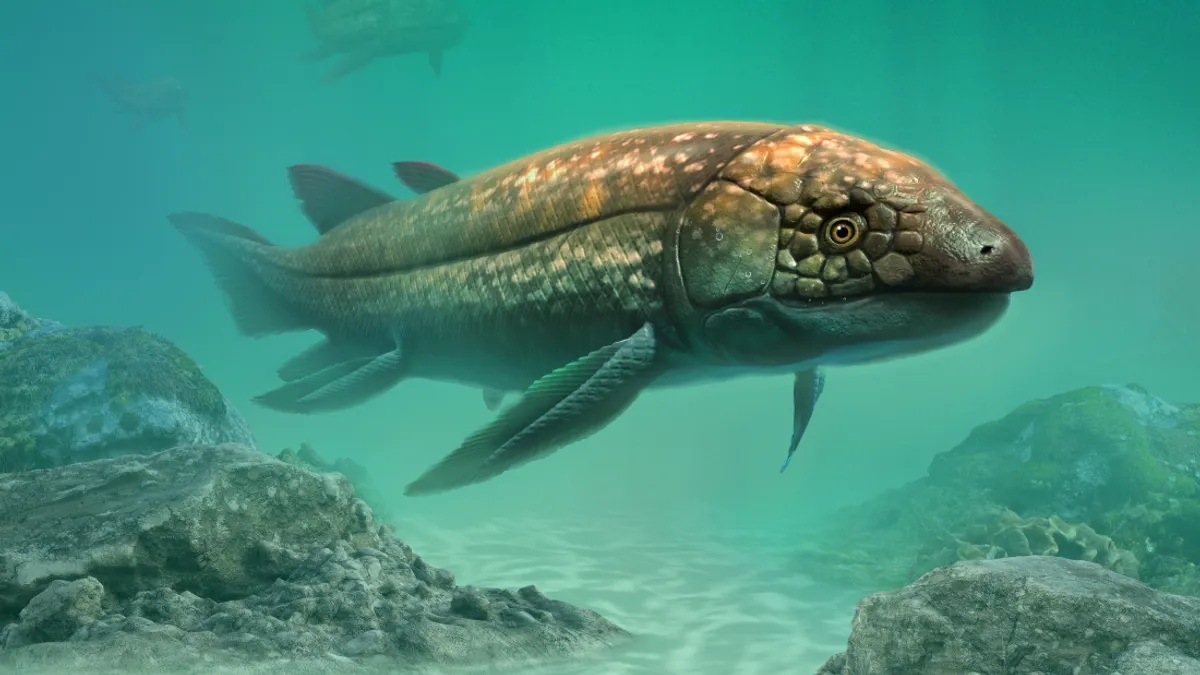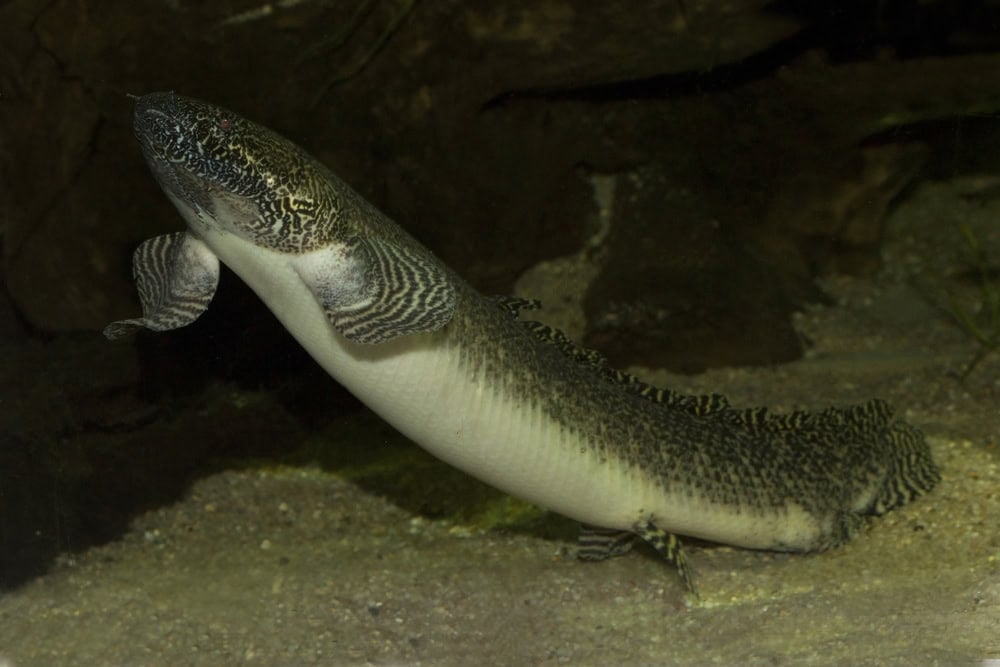In the mysterious depths of Earth’s evolutionary history, a peculiar aquatic creature has emerged as the record holder for the largest genome among all animals: the South American lungfish (Lepidosiren paradoxa). This fascinating fish boasts a genetic code that is 30 times larger than the human genome, revealing new insights into the evolutionary leap from water to land. Let’s dive into the groundbreaking findings and their significance for understanding life’s transition from fins to limbs.
Meet the South American Lungfish

The lungfish isn’t your typical freshwater dweller. Known as a “living fossil,” it represents an evolutionary bridge between aquatic life and terrestrial vertebrates. With its limb-like fins, functional lungs, and primitive skeletal structure, the lungfish provides a snapshot of the evolutionary changes that occurred over millions of years. This ancient creature shares a common ancestor with all tetrapods—four-limbed vertebrates, including humans.
Breaking Records

Researchers recently sequenced the genome of the South American lungfish, uncovering a staggering 90 gigabases of DNA—over 30 times the length of the human genome and twice the size of its closest competitor, the Australian lungfish. To put it in perspective, each of the lungfish’s 18 largest chromosomes is individually larger than the entire human genome.
Despite its colossal size, the lungfish genome contains around 20,000 protein-coding genes—similar to humans. The rest of this vast genetic material, scientists believe, consists of “jumping genes,” or transposable elements, which can duplicate and move around the genome. These rogue sequences have caused the genome to grow substantially over millions of years, adding to its extraordinary size.
Jumping Genes

Image credit: Warpaint
The lungfish genome owes its enormous size to an abundance of transposons. While these jumping genes can disrupt normal genetic function, they also drive rapid genetic changes that may play a role in evolution. Researchers discovered that the lungfish’s genome grows by an amount equivalent to the entire human genome every 10 million years, a trend likely fueled by low levels of piRNA, a molecule that typically suppresses transposons.
This unchecked genomic expansion creates a unique opportunity for scientists to study the effects of transposons on evolution, particularly during critical transitions like the move from water to land.
Lungfish vs. Tetrapods

The lungfish’s genome is more than just a curiosity—it’s a window into the past. By analyzing the genome, scientists reconstructed the chromosome architecture of ancestral lobe-finned fish, which includes the precursors to all tetrapods. This research provides new tools for understanding how our own evolutionary journey began.
Three Species, Three Evolutionary Stories

Image credit: Warpaint
The study compared the genomes of the South American, African, and Australian lungfish species, highlighting fascinating differences:
- Australian Lungfish: Retains its gills and single lung, alongside limb-like fins that resemble the early adaptations for land movement.
- African and South American Lungfish: Have developed a pair of lungs and lost functional gills, with their fins reverting to filamentous structures.
These adaptations illustrate the diverse evolutionary strategies within the lungfish lineage and underscore their pivotal role in the tetrapod story.
Limb Evolution Decoded

One of the study’s most exciting discoveries involved the signaling pathways responsible for limb development. By introducing lungfish genes into mouse embryos, researchers identified changes in the Shh signaling pathway, a crucial regulator of limb formation. These findings offer clues about how ancient vertebrates adapted their fins into limbs capable of supporting life on land.
A Living Laboratory of Evolution

The lungfish genome is not just a relic of the past—it’s an active record of evolutionary processes. Transposons remain active in these creatures, and their genomes are remarkably stable despite their size. This makes lungfish a perfect model for studying how genomes evolve over time and how genetic changes contribute to major evolutionary transitions.
Unlocking the Secrets of Land Conquest

The lungfish is more than a genetic marvel; it’s a key to understanding one of evolution’s greatest feats: the transition from water to land. By studying the genomes of all three living lungfish lineages, scientists hope to uncover the molecular and developmental processes that enabled early vertebrates to conquer terrestrial environments.
The Future of Lungfish Research

The genomic insights gained from the South American lungfish are just the beginning. With chromosome-level genomes now available for all living lungfish species, researchers are poised to delve deeper into the evolutionary mysteries of our lobe-finned ancestors. These discoveries could reshape our understanding of vertebrate evolution, shedding light on how life as we know it first stepped onto solid ground.
In the ever-expanding story of life on Earth, the lungfish serves as both a record keeper and a trailblazer, bridging the ancient past with modern scientific exploration.
- Dog Groomer Transforms Canines into Colourful Creatures - June 30, 2025
- Earth’s Massive ‘Gateway to Hell’ Has Tripled in Size in 30 years and is Now Visible from Space - June 30, 2025
- The African Penguin’s Struggle for Survival - June 30, 2025

